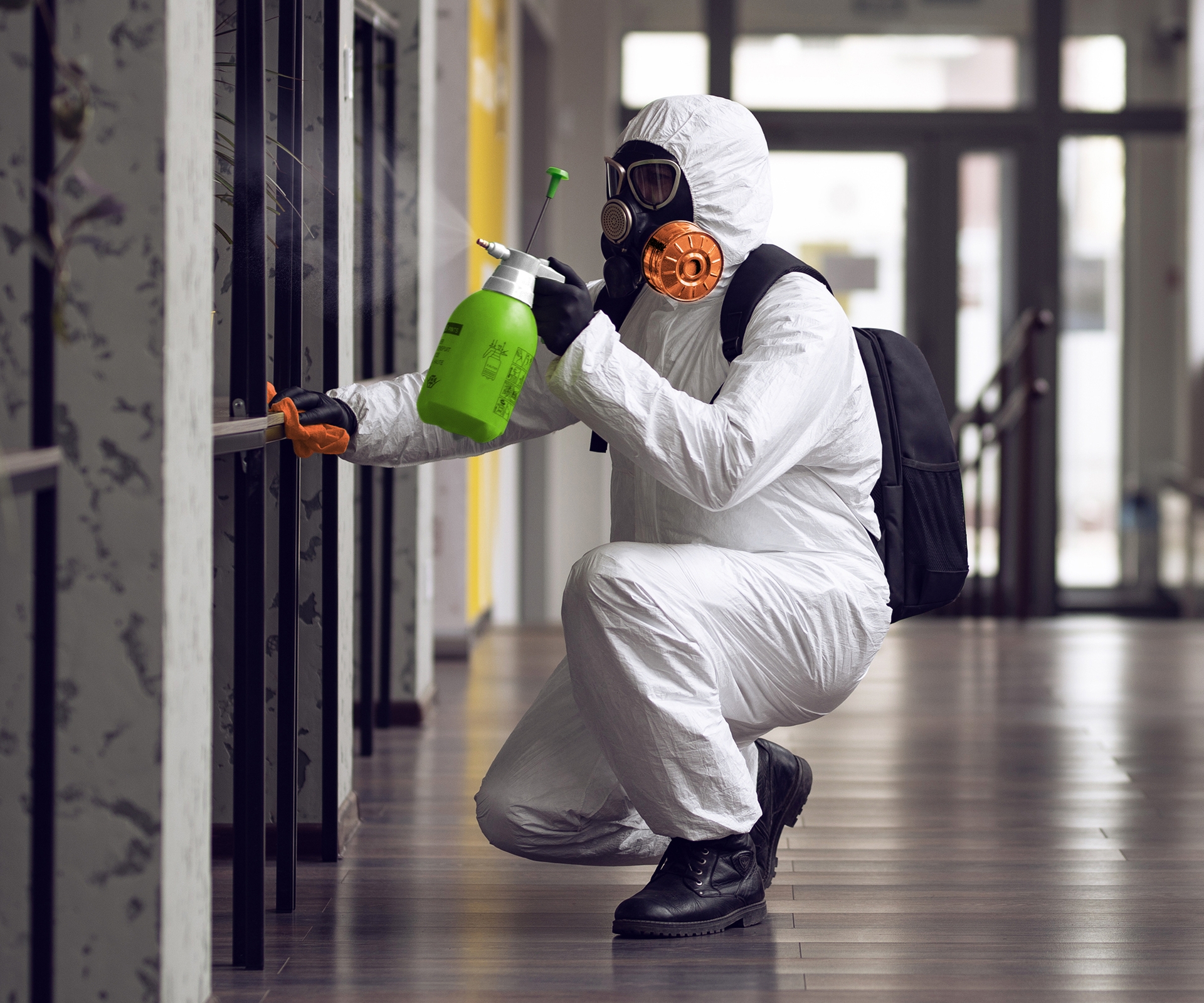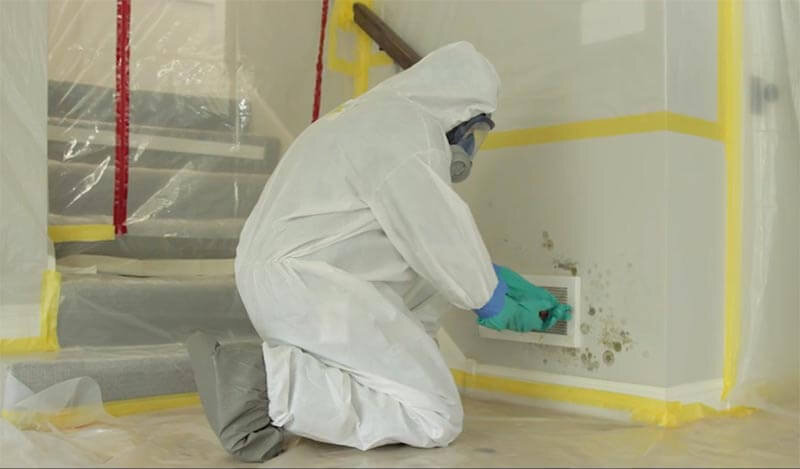Trick Tips for Successful Blog Post Mold And Mildew Removal
Addressing mold and mildew problems in a effective and timely way is vital for preserving a healthy interior setting. Efficiently finishing mold and mildew remediation is a complex procedure that calls for interest to detail and adherence to specific methods. From inspecting treated locations to executing moisture control steps, each step plays a crucial function in making certain the efficacy of the remediation process. However, there are crucial post-remediation actions that are just as vital but frequently neglected. These steps not just verify the success of the removal initiatives but likewise add to protecting against future mold growth.
Evaluation of Treated Locations
Upon conclusion of the mold remediation procedure, a complete assessment of the dealt with locations is critical to make sure the efficiency of the remediation efforts. This evaluation acts as a critical step in the post-remediation phase to confirm that the mold and mildew elimination and cleaning treatments were effective in removing the mold invasion and recovering a safe interior environment. The assessment needs to be conducted by certified professionals that have the proficiency to assess the remediated areas thoroughly.
These consist of aesthetic evaluations to check for any type of indicators of mold and mildew development or water damages, wetness degrees to verify that the area is totally free and completely dry of excess humidity that might promote mold re-growth, and air top quality testing to make certain that the indoor air is safe to take a breath. Additionally, the examination may involve making use of specialized tools such as wetness meters and thermal imaging cameras to detect covert mold and mildew or moisture pockets that can lead to future mold and mildew troubles if left unattended.

Wetness Control Measures
Effective wetness control procedures are necessary for avoiding mold development and keeping a healthy and balanced interior environment. Additionally, using dehumidifiers in damp locations can aid lower humidity degrees, making it harder for mold to grow.
Routinely checking and keeping the structure's exterior can also stop wetness invasion. what to do after mold remediation. Ensuring that seamless gutters are clear, downspouts direct water away from the structure, and the roofing remains in excellent problem can help avoid water from permeating into the building. Correctly securing doors and windows can additionally assist keep wetness out
Any type of leakages or spills must be cleaned and dried out within 24-48 hours to protect against mold growth. By carrying out these dampness control procedures, the danger of mold returning can be substantially decreased, creating a healthier interior atmosphere.
Correct Air Flow Evaluation
An indispensable aspect of guaranteeing a healthy indoor environment message mold and mildew remediation is conducting a detailed assessment of the air flow system. After mold remediation. Appropriate air flow analysis plays an important role in avoiding future mold and mildew growth and maintaining air high quality within the affected room. During the evaluation, specialists review the performance of the air flow system, looking for any kind of clogs, leaks, or breakdowns that could prevent appropriate air movement. It is vital to make sure that the ventilation system is sufficiently sized for the area it serves which it fulfills sector important link requirements for air exchange rates.
Moreover, examining the air flow system includes checking out the circulation of air throughout the location to recognize any kind of areas of bad circulation where wetness and pollutants might accumulate. Appropriate air flow not just assists in controlling moisture degrees yet also aids in removing airborne mold spores and various other pollutants, therefore enhancing total indoor air quality. By addressing any air flow problems post mold and mildew removal, homeowner can produce a much healthier and extra comfortable environment for passengers while reducing the danger of mold re-infestation.
Cleansing and Disinfection Protocols
To ensure detailed mold removal, meticulous adherence to specific cleaning and disinfection methods is crucial. Cleansing her comment is here and disinfection protocols play an important duty in the post-mold removal phase to stop the reoccurrence of mold development and guarantee a healthy and secure environment. The initial step in this process is the elimination of any kind of noticeable mold development making use of appropriate cleaner and strategies. It is vital to use EPA-approved fungicides and disinfectants to efficiently eliminate mold and mildew spores and stop their regrowth.
After the first cleaning, complete sanitation of the affected locations is required to eliminate any type of continuing to be mold spores and hinder their proliferation. This action is critical in avoiding the spread of mold and mildew to other parts of the building. In addition, carrying out safety nets such as applying mold and mildew inhibitors and preserving correct ventilation can assist decrease the danger of future mold and mildew infestations. By following strict cleansing and disinfection procedures, building owners can ensure the successful eradication of mold and create a healthy and balanced indoor environment for residents.
Tracking and Maintenance Strategy
Carrying out a regular monitoring and maintenance plan is vital for ensuring the lasting performance of mold and mildew removal initiatives. As soon as mold remediation is completed, it is vital to establish a monitoring routine to examine the success of the removal This Site procedure. This entails routinely checking the formerly impacted locations for any type of indications of mold and mildew reappearance or water damage. By performing regular checks, any type of new mold and mildew growth can be quickly determined and resolved, stopping a reoccurrence of the preliminary issue.
Furthermore, developing a maintenance plan is key to stopping future mold and mildew concerns. This strategy may include actions such as repairing plumbing leaks, boosting ventilation, and regulating interior moisture levels. Routine maintenance not only aids in avoiding mold however additionally contributes to keeping a healthy indoor atmosphere. It is recommended to record all tracking and maintenance tasks to track progress and guarantee uniformity in the maintenance of the remediated areas. By executing a thorough tracking and upkeep plan, the threat of mold and mildew re-emergence can be significantly decreased, promoting a safe and clean living or workplace.
Verdict
Finally, effective article mold and mildew remediation includes extensive assessment of treated locations, execution of wetness control procedures, analysis of correct ventilation, adherence to cleaning and disinfection procedures, and facility of a monitoring and upkeep plan. These essential steps are important to ensure that mold development is successfully eliminated and stopped from repeating in the future. By adhering to these guidelines, building owners can maintain a safe and healthy and balanced atmosphere for residents.
Upon conclusion of the mold and mildew remediation procedure, an extensive assessment of the dealt with locations is crucial to make sure the efficiency of the remediation initiatives. These consist of visual evaluations to check for any type of signs of mold and mildew growth or water damage, moisture levels to validate that the area is free and dry of excess moisture that can advertise mold re-growth, and air high quality screening to guarantee that the interior air is risk-free to breathe. In addition, the evaluation might involve utilizing specialized devices such as dampness meters and thermal imaging electronic cameras to find surprise mold and mildew or wetness pockets that could lead to future mold problems if left unattended. By dealing with any type of air flow issues post mold removal, property proprietors can develop a healthier and much more comfy environment for passengers while minimizing the risk of mold re-infestation.

Comments on “Testing Air Quality After Mold Remediation”